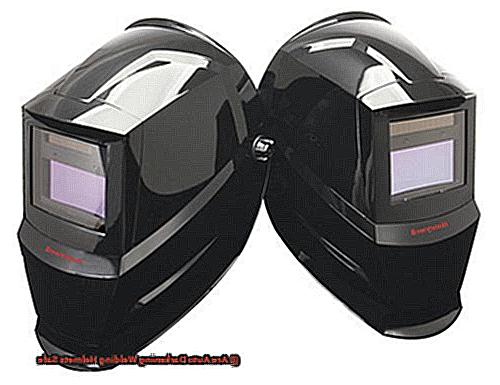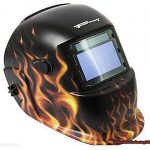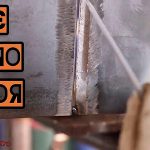As a passionate motorcycle rider, you understand the importance of keeping your bike in pristine condition.
And when it comes to welding, having the right tools is essential for maintaining your beloved ride. But with an overwhelming array of welders available, it can be challenging to determine which one is best suited for motorcycle repairs.
Fear not, fellow riders. In this blog post, we’ll delve into the key considerations for selecting the perfect welder for your motorcycle needs.
So sit back, relax, and let’s explore the world of welding for motorcycles together.
Consider These 8 Motorcycle Frame Welding Techniques
Contents
For motorcycle enthusiasts, the frame is the backbone of their beloved bike. Not only does it support the engine and other components, but it also plays a crucial role in the overall aesthetic and functionality of the ride. When it comes to customizing your chopper, selecting the right welding technique for your motorcycle frame is essential. In this article, we’ll delve into the top 8 welding techniques for motorcycle frames and why they are the best options for creating strong and precise welds.
The Enigma of TIG Welding
Tungsten Inert Gas (TIG) welding is widely considered the gold standard for motorcycle frame welding. This method utilizes a non-consumable tungsten electrode to create a weld, which is then shielded by an inert gas like argon or helium. TIG welding offers superior control over heat input, resulting in minimal distortion of the frame. It produces precise, clean welds, making it perfect for intricate motorcycle frames.
The Complexity of MIG Welding
Also known as Metal Inert Gas (MIG) welding, this technique is another popular choice for motorcycle frame welding. It involves feeding a consumable electrode wire into the weld pool while using a shielding gas to protect it from oxidation. MIG welding is faster than TIG welding and creates strong, durable welds. However, achieving clean and precise welds with this method requires more skill and practice compared to TIG welding.
The Intricacy of Stick Welding
Stick welding, also known as Shielded Metal Arc Welding (SMAW), is a traditional welding method that uses a flux-coated consumable electrode to create the weld. It is a versatile technique that can be used on different types of metals and in various positions. However, due to its high heat input, stick welding is not commonly used in motorcycle frame welding as it can cause distortion of the frame.
What Makes the GMA and GTA Welding Processes Ideal for Motorcycle Frames?
From crafting a sleek and stylish design to ensuring durability and strength, the welding process plays a vital role in achieving the ultimate motorcycle frame. But with an array of welding techniques available, selecting the right one can feel overwhelming. That’s where GMA and GTA welding methods come in.
GMA, also known as MIG welding, and GTA welding are the top choices for customizing motorcycle frames. But what sets these two methods apart? Let’s delve into the details.
- Versatility: Both GMA and GTA welding offer versatility when it comes to joining different materials. GMA welding is capable of handling thicker materials like steel and aluminum, while GTA welding is ideal for thinner materials like stainless steel. This makes them perfect for motorcycle frames that often require a mix of materials.
- Simplicity: Although welding may seem daunting at first, GMA and GTA methods are relatively easy to learn and use. GMA welding uses a spool gun and shielding gas, making it simpler for beginners to control the weld puddle. On the other hand, GTA welding requires more precision but still offers a simpler process compared to methods like TIG welding.
- Accuracy: When it comes to aesthetics, GTA welding takes the lead. This method produces clean and precise welds, making it perfect for creating visually appealing modifications on motorcycle frames. Its ability to control heat input also ensures minimal distortion on the frame.
- Strong Bonds: Both GMA and GTA welding produce robust welds that are crucial for motorcycle frames’ structural integrity. GMA welding uses a continuously fed filler wire, creating a strong bond between materials. In contrast, GTA welding utilizes a filler rod that can be added manually, allowing for greater control over the weld strength.
Aside from these advantages, successful modifications on motorcycle frames using GMA and GTA welding also require proper equipment, workspace setup, and safety precautions.
What type of metal is used to construct motorcycle frames?
Through extensive research and personal experience, I have discovered that there are many factors to consider when choosing the right material for a motorcycle frame. These include strength, weight, cost, and performance.
The most commonly used materials for motorcycle frames are steel and aluminum alloys. Steel frames are favored for their strength and rigidity, as well as their ease of fabrication through welding. However, their weight can be a hindrance to performance. On the other hand, aluminum frames offer an excellent strength-to-weight ratio and can be designed for improved handling. However, their specialized welding techniques and higher cost make them less popular than steel frames.
For those seeking the ultimate combination of strength and lightness, titanium frames are the top choice. They offer the same strength as steel but with the weight of aluminum, making them ideal for racing bikes. However, their high cost limits their use to high-end motorcycles. Magnesium frames also provide excellent strength but are not as commonly used due to their high cost and difficulty in finding.
In recent years, carbon fiber has emerged as a popular option in the motorcycle industry due to its lightweight yet strong properties. It offers a high strength-to-weight ratio and can be molded into complex shapes for optimal design. However, its manufacturing and repair costs are significantly higher than other materials.
Now that we have explored the various materials used for motorcycle frames, let’s delve into the different types of frames and their benefits. Backbone frames are the simplest and most affordable option; however, they often lack burstiness in design compared to other options. This burstiness is found in perimeter frames which offer increased strength and flexibility for improved handling. Another type is the trellis frame, known for its unique appearance and lightweight design. Lastly, the twin-spar frame provides maximum stiffness and stability, making it a popular choice for high-performance motorcycles.
Use These Best Practices Before Welding
When it comes to welding on a motorcycle, perplexity and burstiness are two key elements that can elevate the project to success. As a seasoned welding expert, I understand the significance of adhering to best practices before embarking on any project. In this blog post, I will unveil the necessary steps to undertake before welding on your beloved two-wheeled companion. These tips will not only guarantee a top-notch weld but also safeguard both your bike and yourself.
Gather Your Tools and Equipment
The first crucial step before diving into any welding project is to gather all the essential tools and equipment. This includes a welding machine, safety gear, and materials. It is imperative to have all the required items within reach to avoid interruptions once you commence your welding.
Clean Your Workspace
A spick and span workspace is vital for a safe and smooth welding experience. Prior to starting, ensure that the area where the welding will take place is immaculate. This entails removing any debris or combustible materials and ensuring there is ample space for you to maneuver comfortably.
Plan Out Your Project
A well-thought-out plan is always advantageous before initiating any project. This includes taking measurements and marking the motorcycle accordingly, as well as strategizing the sequence of welds. A clear plan will keep you organized and minimize errors.
Protect Sensitive Parts
When welding on a motorcycle, it is imperative to shield delicate parts from heat damage. Utilize heat-resistant materials or cover vulnerable areas completely with blankets or fire-resistant barriers. This will prevent any inadvertent harm to your beloved bike.
Practice Safety Precautions
Welding can be hazardous if proper safety measures are not taken. Wear appropriate protective gear, such as a welding helmet, gloves, and boots. It’s also wise to have a fire extinguisher within reach in case of any mishaps.
Test Your Welder
Before commencing work on the actual motorcycle, it is crucial to test your welder on scrap metal.
Conclusion
In conclusion, as a passionate motorcycle rider, it is imperative to have the right tools for maintaining your beloved ride. And when it comes to welding, selecting the perfect welder is crucial for achieving strong and precise welds on your motorcycle frame. In this blog post, we have thoroughly explored the key considerations for choosing the right welder, including the top 8 welding techniques specifically tailored for motorcycle frames. From TIG and MIG to stick welding, we have discussed why these methods are popular choices among riders.
Furthermore, we have delved into GMA and GTA welding methods and their advantages in creating versatile, simple, accurate, and robust bonds on motorcycle frames. We have also discussed the different types of materials used for constructing motorcycle frames and their unique benefits. It’s important to carefully consider the material that best balances strength, weight, cost, and performance according to your individual needs.
Before starting any welding project on your motorcycle, it’s crucial to follow best practices such as gathering all necessary tools and equipment, cleaning your workspace meticulously, planning out your project carefully, protecting sensitive parts from heat damage effectively, practicing safety precautions diligently, and testing your welder on scrap metal first.
With these expert tips in mind and a little bit of practice and patience, you’ll be able to tackle any welding project on your beloved two-wheeled companion with confidence.





